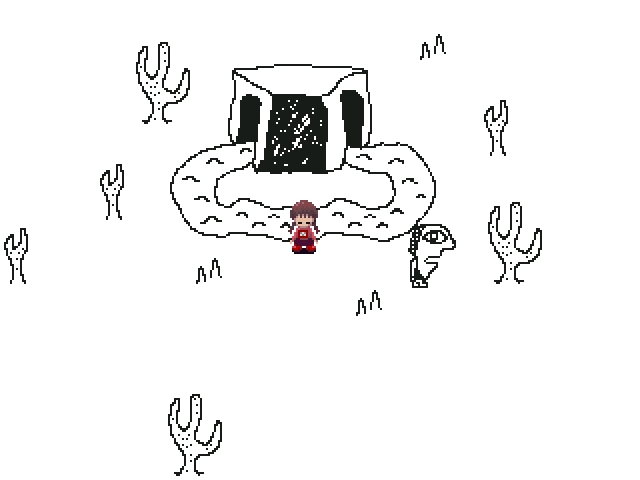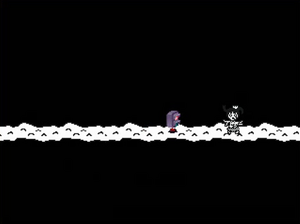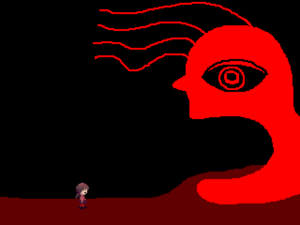>Mt.kiki No edit summary |
>Mt.kiki No edit summary |
||
| Line 50: | Line 50: | ||
==PHANTMa([http://en.wikipedia.org/wiki/Tag_(game) Tag (game)])== | ==PHANTMa([http://en.wikipedia.org/wiki/Tag_(game) Tag (game)])== | ||
Tag (also known as '''tip''', '''tig''', '''tiggy''', '''dobby''', '''dob''', '''it''',<sup class="reference" id="cite_ref-1">[http://en.wikipedia.org/wiki/Tag_(game)#cite_note-1 <u>[1 | Tag (also known as '''tip''', '''tig''', '''tiggy''', '''dobby''', '''dob''', '''it''',<sup class="reference" id="cite_ref-1">[http://en.wikipedia.org/wiki/Tag_(game)#cite_note-1 <u>[1</u>]]</sup> '''chasey''',<sup class="reference" id="cite_ref-2">[http://en.wikipedia.org/wiki/Tag_(game)#cite_note-2 <u>[2</u>]]</sup> and many other names<sup class="reference" id="cite_ref-3">[http://en.wikipedia.org/wiki/Tag_(game)#cite_note-3 <u>[3</u>]]</sup>) is a [http://en.wikipedia.org/wiki/Playground_games <u>playground game</u>] that involves one or more players chasing other players in an attempt to "tag" or touch them, usually with their hand. There are many variations; most forms have no teams, scores, or equipment. | ||
[[File:LAIN(Tag (game))|thumb|center|335 px|"to a tag game played by kinder gartners" #0:30]] | [[File:LAIN(Tag (game))|thumb|center|335 px|"to a tag game played by kinder gartners" #0:30]] | ||
| Line 62: | Line 62: | ||
==[[Monoe]]([http://en.wikipedia.org/wiki/Hide-and-seek Hide-and-seek])== | ==[[Monoe]]([http://en.wikipedia.org/wiki/Hide-and-seek Hide-and-seek])== | ||
Hide-and-seek or '''hide-and-go-seek''' is a game in which a number of players conceal themselves in the environment, to be found by one or more seekers. The game is played by one player (designated as being "it") counting to a predetermined number while the other players hide. After reaching the number, the player who is "it" tries to find the other players. <sup class="reference" id="cite_ref-1">[http://en.wikipedia.org/wiki/Hide-and-seek#cite_note-1 <u>[1 | Hide-and-seek or '''hide-and-go-seek''' is a game in which a number of players conceal themselves in the environment, to be found by one or more seekers. The game is played by one player (designated as being "it") counting to a predetermined number while the other players hide. After reaching the number, the player who is "it" tries to find the other players. <sup class="reference" id="cite_ref-1">[http://en.wikipedia.org/wiki/Hide-and-seek#cite_note-1 <u>[1</u>]]</sup> | ||
[[File:Monoko(RLGL).png|thumb| | [[File:Monoko(RLGL).png|thumb|If the signal became red truly and monoko was run over by the car while playing Statues (game)? | ||
]] | |||
==[[Monoko]]([http://en.wikipedia.org/wiki/Statues_(game) Statues (game)])== | ==[[Monoko]]([http://en.wikipedia.org/wiki/Statues_(game) Statues (game)])== | ||
| Line 73: | Line 74: | ||
==[[Dave Spector]]([http://en.wikipedia.org/wiki/Tag_(game)#Manhunt Manhunt])== | |||
[http://en.wikipedia.org/wiki/Tag_(game)#Variants <u>3 Variants</u>] [http://en.wikipedia.org/wiki/Tag_(game)#Team_tag <u>3.10 Team tag</u>] [http://en.wikipedia.org/wiki/Tag_(game)#Manhunt <u>3.10.2 Manhunt</u>] | |||
Main article: [http://en.wikipedia.org/wiki/Manhunt_(urban_game) <u>Manhunt (urban game)</u>] | |||
Manhunt is a mixture of [http://en.wikipedia.org/wiki/Hide_and_seek <u>hide and seek</u>] and tag, often played during the day. One person is it, while the other players have to hide. Then, the person who is it tries to find and tag them. The game is over when all players are out. Manhunt is sometimes played with teams. In one variant there is a home base in which a player is safe. That version ends when all players who are not safe are out. | |||
| Line 78: | Line 86: | ||
==[[Big Red]]([http://en.m.wikipedia.org/wiki/Red_Rover Red Rover])== | ==[[Big Red]]([http://en.m.wikipedia.org/wiki/Red_Rover Red Rover])== | ||
Red rover (also known as | Red rover (also known as forcing the city gates and octopus tag) is an outdoor [http://en.m.wikipedia.org/wiki/Game <u>game</u>] played primarily by [http://en.m.wikipedia.org/wiki/Children <u>children</u>] on [http://en.m.wikipedia.org/wiki/Playgrounds <u>playgrounds</u>]. This 19th-century children's group game (requiring around 10 or more players total)<sup class="reference" id="cite_ref-ROVEABOUT_1-0">[http://en.m.wikipedia.org/wiki/Red_Rover#cite_note-ROVEABOUT-1 <u>[1</u>]]</sup> is thought to have originated in Britain and then spread to Australia, Canada and the United States. | ||
Røver is a Norwegian word for "pirate", so perhaps the early British were showing bravery by daring the Viking raiders to "come over". The 1829 book titled | Røver is a Norwegian word for "pirate", so perhaps the early British were showing bravery by daring the Viking raiders to "come over". The 1829 book titled [http://en.m.wikipedia.org/wiki/The_Red_Rover <u>The Red Rover</u>]: A Tale by [http://en.m.wikipedia.org/wiki/James_Fenimore_Cooper <u>James Fenimore Cooper</u>] describes the exploits of a pirate called "Red Rover".<sup class="reference" id="cite_ref-2">[http://en.m.wikipedia.org/wiki/Red_Rover#cite_note-2 <u>[2</u>]]</sup> | ||
[[Category:Name]] | [[Category:Name]] | ||
Revision as of 06:58, 2 March 2013
Monoe(PHANTMa)
1998年7月20日
『serial experiments lain LAYER:4 RELIGION』#11:35~11:40
http://www.youtube.com/watch?v=qWuJr_1SOyM
http://ja.wikipedia.org/wiki/Serial_experiments_lain
2009年06月07日 10:30
"【ゆめにっき】そうだ、モノ江さんに会いに行こう。"#6:10~6:20
Added by "さんすう" http://www.nicovideo.jp/watch/sm7272248
Used by "さんすう" http://www.nicovideo.jp/user/11784773
PHANTMa(Tag (game))
Tag (also known as tip, tig, tiggy, dobby, dob, it,[1] chasey,[2] and many other names[3]) is a playground game that involves one or more players chasing other players in an attempt to "tag" or touch them, usually with their hand. There are many variations; most forms have no teams, scores, or equipment.
Encoded by Kick Ass Anime(English Sub)
Come visit us @ irc.mircx.com #KickAssAnime
1998年7月20日
『serial experiments lain LAYER:4 RELIGION』 #13:35~14:15
http://ja.wikipedia.org/wiki/Serial_experiments_lain
Monoe(Hide-and-seek)
Hide-and-seek or hide-and-go-seek is a game in which a number of players conceal themselves in the environment, to be found by one or more seekers. The game is played by one player (designated as being "it") counting to a predetermined number while the other players hide. After reaching the number, the player who is "it" tries to find the other players. [1]
Monoko(Statues (game))
Red light/Green light (sometimes abbreviated as RLGL) is a variation of statues. The "it" person stands at one end of the playing field, with the rest of the players at the other end. "It" turns their back to the others and calls out "Green light!" The players then run as fast as they can towards "it". At any time, "it" can face the players, calling out "Red light", and the others must freeze in place. If anyone fails to stop, they are out or must return to the starting line.
Dave Spector(Manhunt)
3 Variants 3.10 Team tag 3.10.2 Manhunt
Main article: Manhunt (urban game)
Manhunt is a mixture of hide and seek and tag, often played during the day. One person is it, while the other players have to hide. Then, the person who is it tries to find and tag them. The game is over when all players are out. Manhunt is sometimes played with teams. In one variant there is a home base in which a player is safe. That version ends when all players who are not safe are out.
Big Red(Red Rover)
Red rover (also known as forcing the city gates and octopus tag) is an outdoor game played primarily by children on playgrounds. This 19th-century children's group game (requiring around 10 or more players total)[1] is thought to have originated in Britain and then spread to Australia, Canada and the United States.
Røver is a Norwegian word for "pirate", so perhaps the early British were showing bravery by daring the Viking raiders to "come over". The 1829 book titled The Red Rover: A Tale by James Fenimore Cooper describes the exploits of a pirate called "Red Rover".[2]




